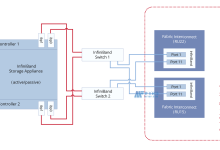linux CVS is a powerful version control system for controlling the development of large programs, scripts and other digital content such as documents, spreadsheets, and pictures. It is used to store and share documents, track and manage changes to projects, and generally facilitate collaboration between project members. CVS is designed with an architecture that allows users to work easily and smoothly on collaborative projects.
Linux CVS offers users the ability to create branches that can be used to store different versions of source code. A branch is an isolated version of a project which can be later integrated with the main branch. This allows developers to make changes and modify versions in isolation which reduces the chances of conflicting changes and minimizes the disruption to the main code base.
When using Linux CVS, users can easily integrate changes from different branches by merging them with the main branch. This makes it easy for the project’s main branch to stay up to date with the most recent changes. Furthermore, users can easily view a history of changes to identify who made each change and why. This allows developers to easily trace back to the source of any errors or bugs.
Linux CVS also features features such as access control and encryption for users who want to ensure their code is secure. Users can easily configure their access settings to allow only certain users to access or modify their source files. Additionally, Linux CVS supports secure transmission with encrypted communication.
Linux CVS is an effective solution for teams of any size to manage and maintain their source code. It provides the power and flexibility to quickly and easily collaborate on projects as well as manage and track changes with ease. By properly understanding Linux CVS and implementing it into any collaborative project, teams of any size can enhance their collaboration process and maximize the overall productivity of their project.
Below is a sample of the code used to configure a repository in Linux CVS:
cvs -d /path/to/cvs_repo init
cvs -d /path/to/cvs_repo import project project-name initial
By using these simple commands, developers can take full advantage of Linux CVS and maximize collaboration and version control. With the help of its features, users can not only stay up-to-date with the project, but also ensure their code is secure. Moreover, developers can easily view a history of changes and revert to any previous version if needed. Linux CVS is a powerful tool that is essential for any interactive project.

 国外主机测评 - 国外VPS,国外服务器,国外云服务器,测评及优惠码
国外主机测评 - 国外VPS,国外服务器,国外云服务器,测评及优惠码












